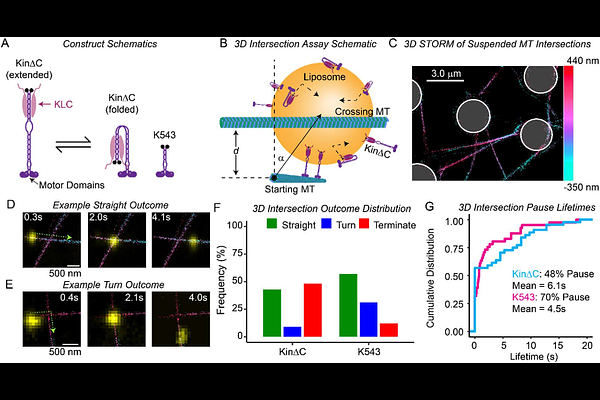Kinesin-1 Autoinhibition Tunes Cargo Transport by Motor Ensembles

Kinesin-1 Autoinhibition Tunes Cargo Transport by Motor Ensembles
Bensel, B. M.; Previs, S. B.; Fagnant, P. M.; Trybus, K. M.; Walcott, S.; Warshaw, D. M.
AbstractIntracellular vesicular transport by kinesin-1 motors through numerous 3-dimensional (3D) microtubule (MT) intersections must be regulated to support proper vesicle delivery. Knowing kinesin-1 can be regulated via autoinhibition, does kinesin-1 exhibit autoinhibition on cargo, and could this regulate vesicular transport through 3D MT intersections in vitro? To answer this question, we compared liposome transport by ~10 nearly full-length kinesin-1 motors with KLC bound (Kin{Delta}C) versus constitutively active control (K543). In 3D MT intersections, Kin{Delta}C-liposomes terminate (48%), go straight (43%), but rarely turn (9%), starkly contrasting K543-liposomes which go straight (57%), turn (31%), but rarely terminate (12%). On single MTs, Kin{Delta}C-liposomes have reduced run lengths and detachment forces versus K543-liposomes, suggesting autoinhibition reduces MT engagement, as supported by 3-fold lower Kin{Delta}C MT landing rates versus K543, and mechanistic in silico modeling. Furthermore, kinesore, a small molecule that overcomes kinesin-1 autoinhibition, restores Kin{Delta}Cs MT engagement. Thus, we propose that partial kinesin-1 autoinhibition while cargo-bound may fine-tune cargo delivery to support physiological demands.